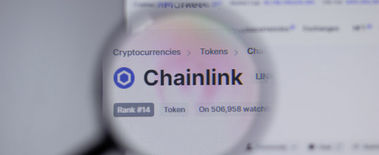Ethereum has completed the rollout of its much-anticipated Pectra upgrade. As confirmed on X, this is one of the biggest advancements to the network since the Merge and Dencun upgrades. The update went live on the mainnet at epoch 364032 shortly after 6:00 a.m. ET on May 7.
This comes after months of development, testing, and technical troubleshooting across multiple testnets. The upgrade activates 11 Ethereum Improvement Proposals (EIPs) to improve the blockchain’s core infrastructure.
The upgrade was first deployed on Ethereum’s new Hoodi testnet after prior complications on Holesky and Sepolia raised concerns about launch readiness. Following successful testing and a smooth final deployment phase, the Ethereum Foundation confirmed the live mainnet activation. The market responded quietly, with ETH trading around $1,800 and gaining a modest 3%. However, Pectra promises a significant long-term impact.
Ethereum Staking Flexibility Sees an Overhaul
Among the changes introduced by Pectra is the increase of Ethereum’s staking capacity. Through EIP-7251, the upgrade raises the maximum effective balance for validators from 32 ETH to 2,048 ETH. This adjustment allows large staking operators to reduce the number of individual validators they manage. For Ethereum, which currently depends on a distributed validator network for consensus, this improves both efficiency and scalability.
Pectra also introduces deeper integration between the consensus and execution layers. EIP-7002 and EIP-6110 enable the execution layer to handle validator exits, partial withdrawals, and deposit processing directly. This change unlocks new opportunities for on-chain automation of staking-related actions. Such developments are particularly relevant for institutional investors and DeFi protocols managing pooled staking strategies.
READ MORE: Best Crypto to Buy Ahead of Key U.S. Crypto Regulation Hearing
EIP-7691 improves Ethereum’s data availability layer by doubling the number of data blobs per block. This enhancement helps layer 2 solutions process more transaction data efficiently. The improved throughput could lead to lower fees and faster finality on rollups. EIP-7691 will ultimately lead to proto-danksharding and Verkle trees.
Smart Wallets and User Experience Take a Leap
From the perspective of end users and developers, Pectra is equally transformative. With EIP-7702 now live, Ethereum introduces smart account functionality to the wallet layer. This feature lays the groundwork for full account abstraction. The changes will help simplify wallet interactions and lower the barrier to entry for crypto newcomers. Users can now authorize transactions using alternative authentication methods, such as passkeys, and execute multiple actions in a single transaction.
Other notable additions include EIP-2935, which enables on-chain access to recent block hashes. EIP-2537 improves gas efficiency by reducing costs for cryptographic operations. Collectively, these EIPs enhance Ethereum’s performance and functionality across both frontend and backend layers.
Furthermore, new validator onboarding tools have been introduced to make deposits better. EIP-6110, in particular, reduces the average activation time for new validators to under 15 minutes by transferring deposit responsibilities to the execution layer. This smoother process is to accelerate validator participation. This process strengthens the network’s security and responsiveness.
Although Pectra is an achievement, it is only the first part of a two-phase roadmap. The second phase, Fusaka, will launch in late 2025 and continue enhancing the protocol’s performance and scalability. Fusaka is to integrate PeerDAS and other next-generation data availability technologies. This upgrade will help increase Ethereum’s ability to accommodate global user demand without compromising decentralization.
For now, the successful deployment of Pectra shows Ethereum’s growing maturity as a decentralized platform capable of hosting complex applications, financial instruments, and next-gen web infrastructure. With improved validator economics, expanded wallet capabilities, and layer 2 support, Ethereum continues as a foundational blockchain for web3.
While ETH’s price has not yet fully reflected the effects of Pectra’s activation, many in the developer and investment communities view the upgrade as a pivotal moment.
Disclaimer: This is a sponsored post provided by a third party. The views, information, and claims presented do not represent those of Bankless Times. Bankless Times has not independently verified the accuracy of this content. Readers should conduct their own research before taking any action based on this information. This post does not constitute financial advice or recommendation and should not be treated as such.
As Ethereum’s Pectra upgrade highlights innovations shaping cryptocurrency infrastructure, meme coins are evolving beyond hype, gaining serious attention through strong communities, creative utility, and growing market influence. Here are three cryptos that have caught the eyes of traders and investors.
PepeX (PEPX)
PepeX is a no-code meme coin launchpad. It is powered by artificial intelligence and runs on Solana. PepeX has raised over $2 million since its presale went live March 24, 2025. It is currently valued at $0.0255 and will increase to $0.0268 in the next phase. Payment is made possible using ETH, SOL, USDC, and USDT.
There are 30 stages in the 90-day presale with each stage having a 5% price increase. PepeX makes token creation easier. With its AI Moonshot Engine, its marketing and community management is automated. The AI even produces viral memes and social bots.
PEPX holders receive early launch access and staking rewards. It aims to empower creators, disrupt competitors, and strengthen governance.

Bitcoin Pepe (BPEP)
Bitcoin Pepe is a layer 2 meme coin that combines Bitcoin’s security with low-cost and high-speed transactions using the fresh PEP-20 token model. Launched in February 2025, it intends to merge Bitcoin’s stability with Solana-speed, appealing to meme coin traders.
The total supply is capped at 2.1 billion tokens, with 50% allocated to the community and 15% reserved for staking rewards. A tiered presale model rewards early investors with approximately 5% price increases at each level. Presale has already raised nearly $8 million.
Staking pools have high returns: the Medium Pool has 250% APY with $22.4 million allocated, and the Small Pool has 75% APY with $1.6 million. Future plans include decentralized exchange and NFT marketplace to expand the ecosystem.

CartelFi (CARTFI)
CartelFi has raised over $1.5 million in its presale since April 8, 2025. Token pricing increases 5% every three days. The price has risen to $0.045, from approximately $0.025 when it launched its presale. With the total supply set at 1 billion tokens, 25% will be allocated to presale buyers.
CartelFi’s staking pools come with as much as 1000% APY by staking meme coins such as PEPE, Floki, and DOGE without selling. CartelFi employs a buyback-and-burn mechanism where 50% of the tokens purchased from fees are burned to drive down supply and support price.
CartelFi will introduce its V2 protocol, meme and stablecoin pools of liquidity, and fresh token partnerships in 2026. This will enlarge the ecosystem and increase rewards.














